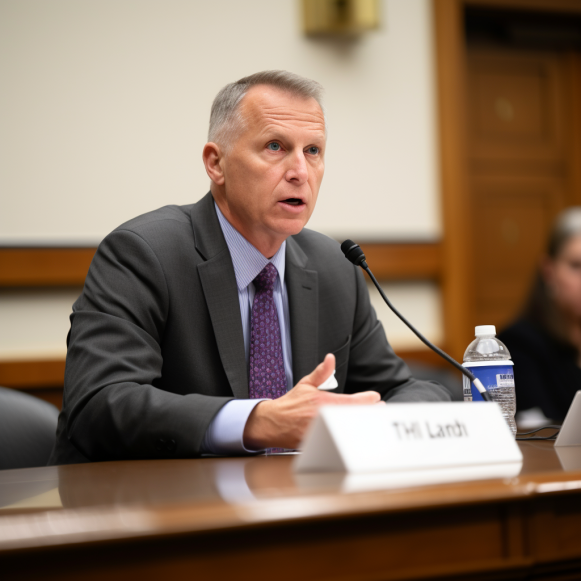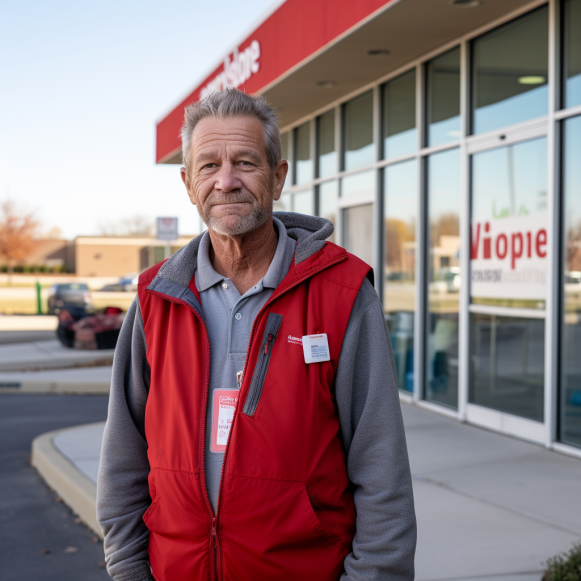Bipolar disorder is little researched, but doctors at Johns Hopkins aim to change that

Charita Cole Brown’s doctors told her parents that she might not be able to care for herself two months before she was supposed to graduate from college, and about two years after she had her first manic episode and was diagnosed with bipolar disorder.
Cole Brown had just had a psychotic break that was eerily similar to what her grandmother had gone through years before. Despite her doctors’ predictions that she would never lead a “normal” life, Cole Brown found a combination of medication and other wellness strategies that worked for her within a few years.
She graduated from college, attended Towson University for graduate school, fell in love, and raised two daughters to be “some of the kindest women you will ever meet.” She later cared for both of her parents in their final years.
“Bipolar disorder is a difficult illness. “I don’t think I have any enemies, but if I did, I would not wish this on them as a punishment,” said Cole Brown, who lives in Park Heights and published a memoir called “Defying the Verdict: My Bipolar Life” in 2018.
“However,” she added, “you can live well.”
Bipolar disorder, a serious mental illness characterized by dramatic shifts in mood, energy, activity, and cognition, remains under-researched, even when compared to other mood disorders, more than 40 years after Cole Brown’s diagnosis. While an estimated 2.6% of Americans aged 18 and up have bipolar disorder, people with the disorder, particularly those who are Black or African American, are frequently misdiagnosed.
Researchers and clinicians at the Johns Hopkins School of Medicine, on the other hand, are hopeful that this will change soon. They’re looking for people who have been diagnosed for a long-term study in which researchers will follow participants for at least five years in order to better understand the disease and how to treat it.
BD2, a Washington, D.C.-based organization founded last year to bring more resources to the study of bipolar disorder, recruited Hopkins as one of six research institutions across the country for the project. Three family foundations joined forces with the Milken Institute to fund the organization, contributing a total of $150 million to accelerate breakthroughs in treating and understanding the disease.
The Mayo Clinic, the University of Michigan, and the University of California, Los Angeles are among the institutions leading the five-year study, which aims to enroll 4,000 people with bipolar 1, a type of the disorder characterized by more severe elevated mood episodes than bipolar 2.
Researchers hope to broaden their focus to bipolar 2 as funding becomes available, according to Cara Altimus, managing director of BD2. While the organization has enough funding to support the project for five years, researchers hope to follow patients for even longer to gain a better understanding of how their symptoms and disorder trajectory change as they age.
Even for more commonly studied health problems, projects of this breadth and scope are uncommon. Longitudinal studies are costly and necessitate extensive buy-in from scientists, patients, and funders — a difficult-to-achieve trifecta. However, as Altimus stated, they are extremely valuable.
“So much of our science is happening in snapshots — in three month intervals, in one year intervals,” she went on to say. “But we all know that our past, medications we’ve taken, and life experiences all have a significant impact on how our health progresses over time.” And you can’t see that unless you look at a much longer time span.”
Researchers will collect massive amounts of data from participants, including annual brain scans and blood samples, as well as information from their smartphones, such as when they use the device for the first and last time each day. The findings of this process, known as “deep phenotyping,” will be uploaded to a repository shared by all six research sites and used to better understand differences between disorder subtypes and trajectories.
Hopkins researchers intend to recruit approximately 300 people for the study and will work with community organizations to ensure a diverse group is recruited.
Dr. Fernando Goes, director of the school’s Precision Medicine Center of Excellence in Mood Disorders, will lead the effort.
According to Goes, there are no eligibility requirements for the study other than being diagnosed with bipolar 1 and being willing to commit to a long-term project. Participants, he added, should ideally be patients in the Hopkins medical system. As a result, the study’s findings could be easily applied to improving patient care even before the project is completed.
While that could be accomplished with patients outside of the health care system, Goes believes that “the easiest way is within our health care system, where the investigators and clinicians are either the same people, or they rub shoulders in the hallways.”
The study’s preparations took even longer than the study itself is expected to last.
Altimus stated that it took 80 months — nearly seven years — of planning and an additional nine months of selecting and preparing the sites. During the planning stages, researchers polled nearly 6,500 people with bipolar disorder, depression, or both to see what they wanted to be studied.
They prioritized metabolism, sleep, cognition, and social engagement, according to Altimus, a departure from the simplistic model used by researchers to study bipolar disorder, which divides the disease into periods of depression and mania.
“What we often miss is that people with bipolar also experience changes in energy and changes in cognition and changes in ability to engage in life,” says Altimus. “That’s why this study is so important.”
“What we’re really hoping to do is move beyond our understanding of bipolar as just kind of the outward expression of mania and depression and bring this into a space of really understanding the whole person, as bipolar affects them,” she said, “and how that affects their ability to get out of bed in the morning or their ability to have energy over time or how that affects sleep and wake cycles, or the ability to engage socially or not, or think clearly or not.”
Kerry Graves, executive director of NAMI Metropolitan Baltimore, a mental health organization dedicated to increasing public understanding of mental illnesses, was enthusiastic about the new bipolar study. While studying mental health conditions is costly, so is caring for someone with a mental health condition, according to Graves.
“Mental health conditions, in general, are some of the most treatable conditions out there,” said Graves. “If we can get the correct treatment strategies through research, the changes that would make are really, really dramatic.”
Cole Brown, the memoir author, has been hospitalized for bipolar disorder for more than 25 years. Her recovery has been hampered by the deaths of her husband, parents, and older sister, whom she described as the “glue” of her family.
She gets adequate rest. She takes her medications on a regular basis. She thinks about the Bible. She says a prayer. She does not consume alcohol. Above all, she is clinging to hope.
“My life is proof that you can live differently than what people thought,” she was quoted as saying. “It is also what you believe for yourself.” What are you feeling in your heart? What do you believe about your potential? “How far are you willing to go to stay healthy?”
Those interested in taking part in the study should contact moods@jhu.edu.





